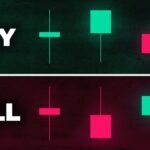As individual traders, we often look for any edge we can get in the highly competitive world of financial markets. One of the tools that institutional traders often use to gain an edge in their trading strategies is candlestick patterns. These patterns provide valuable information about market sentiment and can help traders make more informed decisions.
Candlestick patterns are graphical representations of price movements in a particular asset over a set period of time. Each candlestick consists of a body and two wicks, which represent the high, low, opening, and closing prices of an asset. By analyzing patterns formed by these candlesticks, traders can gain insight into market trends and potential future price movements.
Institutional traders are well-versed in the art of reading and interpreting candlestick patterns. They use this knowledge to predict market movements and make profitable trades. By understanding the psychology behind these patterns, institutional traders can gain a competitive edge over individual traders.
One common candlestick pattern that institutional traders often use is the engulfing pattern. This pattern consists of two candlesticks, where the body of the second candle completely engulfs the body of the first candle. The engulfing pattern is typically seen as a bullish or bearish reversal signal, depending on whether it appears at the top or bottom of a trend. Institutional traders pay close attention to engulfing patterns as they can signal a shift in market sentiment and provide an opportunity for profitable trades.
Another popular candlestick pattern used by institutional traders is the hammer pattern. This pattern consists of a small body with a long lower wick, resembling a hammer. The hammer pattern is typically seen as a bullish reversal signal, indicating that buyers are stepping in to support the price. Institutional traders use the hammer pattern to identify potential buying opportunities and enter trades at advantageous prices.
In addition to individual candlestick patterns, institutional traders also analyze combinations of patterns to gain further insight into market movements. By recognizing patterns such as doji, shooting star, and spinning top, institutional traders can identify trends, reversals, and potential trade opportunities.
Overall, candlestick patterns are a valuable tool for institutional traders looking to gain an edge in the financial markets. By understanding and interpreting these patterns, institutional traders can make more informed trading decisions and increase their chances of profiting from market movements. As individual traders, we can also benefit from studying and applying candlestick patterns in our own trading strategies to improve our chances of success in the competitive world of finance.


